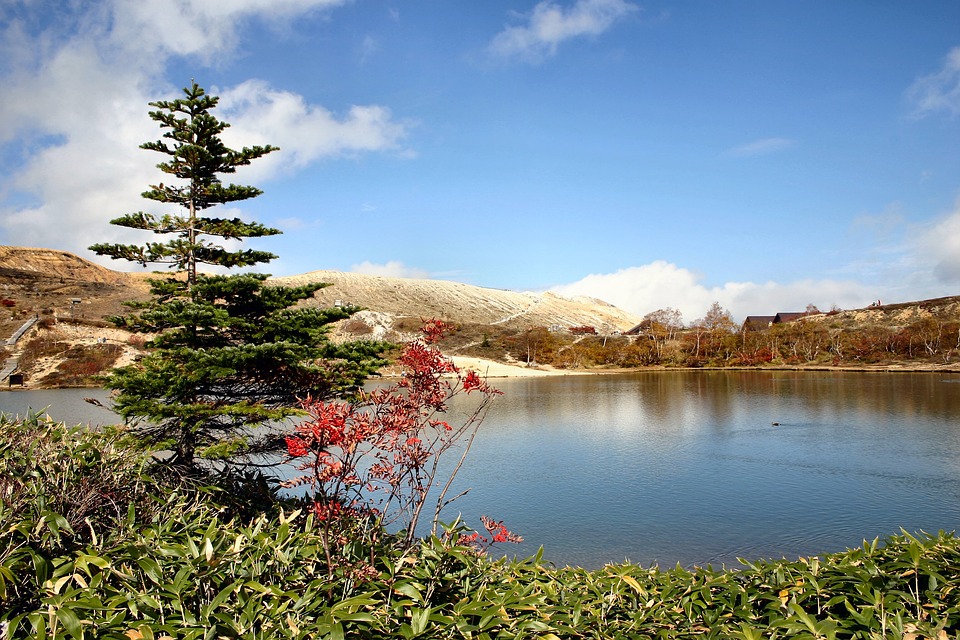In the northwestern part of Kanto plain lies Gunma, a landlocked prefecture made up of several cities and towns, blessed with beautiful mountains, pristine rivers, untouched national parks, relaxing onsen resorts, and incredible historical and cultural attractions.
How To Get To Gunma
To travel to Gunma Prefecture, you may take a Shinkansen, a train, or a bus.
Tokyo and Gunma are connected to each other by two Shinkansen lines. You can catch the JR Joetsu Shinkansen Line and JR Hokuriku Line at either Tokyo Station or Ueno Station in Tokyo, and then get off at Takasaki Station in Gunma. The one-way journey takes about an hour and a half, and costs around 4,500 yen.
By regular trains, Gunma is accessible via several JR lines, such as Takasaki Line, Shinetsu Line, Joetsu Line, Agatsuma Line, Ryomo Line, and Hachiko Line; and Tobu Railway lines, like Isesaki Line, Kiryu Line, and Nikko Line.
Other railway companies that operate in Gunma are Joshin Electric Railway, Watarase Keikoku Railway, and Jomo Electric Railway.
There are also buses that offer routes between Gunma and Tokyo and other Japanese cities. The Japan Bus Online website provides more information on routes, timetables, ticket prices, reservations, and others.
Top Attractions in Gunma
Mount Kusatsu-Shiranesan
Considered as 100 of Japan’s most famous mountains, Mount Kusatsu-Shiranesan is a beautiful mountain that offers a wide array of nature and outdoor activities any time of the year.
In the summer, it is a great place to do some hiking and trekking, as it has scenic trails all over, with magnificent views of beautiful flowers — like rhododendrons, fireweed, and Japanese gentian — which reach their peak blooming seasons around May to October.
In winter, the mountain transforms into a top notch ski resort, offering powdery snow and exciting slopes.
In spring, the Shiga-Kusatsu Route, which is a five-metre tall snow corridor, gets opened to visitors who want to check out the towering white walls completely made of snow.
In autumn, the mountain’s thriving forests become a stunning sea of red and orange, as the leaves change colours once peak autumn foliage begin.

To get to Mount Kusatsu-Shiranesan, take a train to Naganohara Kusatsuguchi Station, which is along the JR Agatsuma Line, and then transfer to a JR Bus Kanto bound for Kusatsu-onsen-bus terminal. Take another bus, this time headed for Sessho-gawara, and then alight at the Sessho-gawara stop.
The Gunma Prefecture tourism website has more information on Mount Kusatsu-Shiranesan.
Oze National Park
A national park located approximately 150 kilometres outside of Tokyo, the Oze National Park boasts of majestic mountains and a number of other natural wonders, including the Ozenuma Pond and the Ozegahara Marshland.
Because of the long list of outdoor and nature activities the park has to offer, it is a favourite destination of hikers, photographers, and adventure seekers who wish to get away from the hectic urban life of Tokyo and other metropolitan areas.
To get there from Tokyo, you have a couple of available public transportation options.
Take either the JR Joetsu Shinkansen to Jomo Kogen Station, or the JR Hokuriku Shinkansen or JR Joetseu Shinkansen to Takasaki Station. Then, transfer to a local train headed for Numata Station. At Numata Station, catch a bus bound for the national park. The total one-way travel takes about three hours
There are also highway buses that run between Tokyo and the Oze National Park area from late May to mid October. The Kanetsu Kotsu bus company offers three buses a day, leaving from JR Shinjuku Station and arriving to Oze. The one-way trip is around four hours long. Find out more about this service on Kanetsu Kotsu’s official website.
Kusatsu Onsen
Regarded as one of the best onsen resorts in Japan, Kusatsu Onsen is a nice hot spring town that offers therapeutic natural hot spring waters for many centuries now. It is home to many ryokan, public bath houses, public foot baths, outdoor baths, and indoor baths, such as the Sainokawara Rotenburo, a very big public outdoor bath that can accommodate around 100 people; Otakinoyu, a public bath with gender separated outdoor and indoor baths; and Gozanoyu, a resort with wooden and stone baths available for men and women.
Because the onsen is located around 1,200 metres above sea level, up on the gorgeous mountainous region of Gunma, it also provides pleasant hiking trails in the summer, and exciting skiing attractions in the winter.
To get to Kusatsu Onsen, you may take a train headed for Naganohara-Kusatsuguchi Station, and then transfer to a JR bus bound for Kusatsu Onsen; or a direct bus from Tokyo, Karuizawa, and other nearby cities.
You can find the available bus options, timetables, and other information on the following websites: Highway-buses.jp and JR Bus Kanto.
Minakami
Found in northern Gunma, Minakami is another quaint onsen resort surrounded by lush nature. It is popular for its mixed outdoor hot spring bath, Takaragawa Onsen, which offers some of Japan’s largest outdoor bath houses.
In addition, the town provides opportunities to take part in different adrenaline-pumping nature adventures that include whitewater rafting on Tone River, mountain biking through the town’s backcountry trails, hiking up Mount Tanigawa, bungee jumping from the 42-metre high Suwakyo Bridge, and skiing and snow sports at its ski resorts in the winter.
From Tokyo, Minakami is reached by taking the JR Joetsu Shinkansen to Jomo Kogen Station, and transferring to a bus bound for Minakami Station. There is also a local train that runs from Ueno Station in Tokyo to Takasaki Station in Gunma, which gives you access to Minakami Station via the JR Joetsu Line. The one-way trip is about three hours long.
Getting Around Gunma
Get a 3-day bus pass to be able to explore Minakami conveniently and economically. It only costs 2,000 yen, and is valid on all local buses in the area. More information on Minakami’s bus services is found on Kanetsu Kotsu’s website.
Weather in Gunma
In the summer, Gunma is usually hot, humid, and rainy, with daily temperatures in the mid to high 20s degree Celsius. In winter, the prefecture experiences strong, cold winds that make the daily temperatures drop to below 5 degrees. In the spring and autumn seasons, average temperatures fall between 10 and 15 degrees, and are generally dry enough to enjoy cherry blossom and autumn leaves viewing, and other outdoor activities.
